What Are Crypto Narratives?
Narratives in cryptocurrency refer to the trending ideas, stories, or beliefs that shape how people perceive and value cryptocurrencies. These narratives can influence investor sentiment, market trends, and the adoption of new technologies.
Key Takeaways
-
Narratives in cryptocurrency refer to the trending ideas, stories, or beliefs that shape how people perceive and value cryptocurrencies – they can influence investor sentiment, market trends, and the adoption of new technologies.
-
Liquid restaking tokens, liquid staking derivatives, blockchain modularity, Layer 1s, Layer 2s (Optimistic rollups and zero knowledge rollups), BRC-20, DePIN, DeSci, GambleFi, Telegram crypto trading bots, and RWAs are some narratives to watch in 2024.
-
Crypto narratives can also be misleading or even harmful based on false assumptions or hype. Therefore, it's important to critically evaluate narratives and base your investment decisions on sound analysis and research.
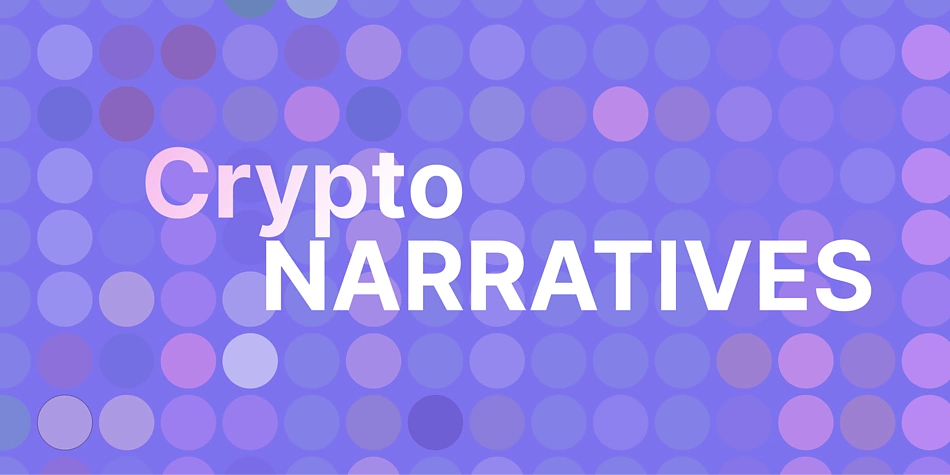
This article was updated in January 2024 to reflect new and upcoming narratives by the CoinGecko team.
Market participants are always looking for trends to better understand what is taking place, why it's taking place, and its potential impacts. Historically, they use the dynamics of market cycles to act more proactively in future market environments. From Elon Musk's tweets moving the price of DOGE, to believing in the Bitcoin halving driving bull runs every four years, many investors use crypto narratives to predict price action.
For example, the narrative of cryptocurrencies as a store of value has attracted many investors who view cryptocurrencies as a hedge against economic uncertainty. Similarly, the narrative of blockchain as a disruptive technology has attracted many entrepreneurs and developers working to build new applications on the blockchain.
Why Are Crypto Narratives Important?
Crypto narratives emerge from a combination of factors, including the technological capabilities of crypto and the blockchain, social and economic events, and the beliefs and motivations of the individuals involved in the cryptocurrency industry. Mainstream media, social media, online forums, influencers, and market trends can fuel narratives. In 2024, we’re seeing a trend in narratives that explore the capabilities and application of the blockchain, such as Decentralized Physical Infrastructure Networks (DePIN) and Decentralized Science (DeSci).
Narratives are important because they play a significant role in shaping public perception and subsequently market movements. They provide a framework for people to understand the potential risks and rewards of different types of cryptocurrencies, and they can influence the trajectory of the entire cryptocurrency industry.
However, crypto narratives can also be misleading or harmful based on false assumptions or hype. As such, it's important to critically evaluate narratives and base your investment decisions on sound analysis and research.
Now, there are multiple emerging trends and themes that are trying to define 2024. We’ll look at the top 12 crypto narratives to watch in 2024 in this guide:
Memecoins
Memecoins were the most profitable narrative in Q1 2024, with the highest returns of over 1,000% across its top tokens. As the name suggests, memecoins are based on memes and trends, supported by an enthusiastic community. They are usually positioned as fun tokens and usually depend on growing their community to go viral and drive growth. Memecoins can also offer traders an easy way to enter the hype around popular blockchains, as tokens are usually sold for a fraction of a cent upon launch. Unlike other narratives in this list, potential buyers do not need to have a complex understanding of the world of cryptocurrencies before buying into the hype, as most memecoins have little utility (especially upon launch).
In Q1 2024, the resurgence of interest in the Solana blockchain led to a rise in memecoins on Solana, and with the launch of EIP-4844 and reduced transaction fees on Layer 2s, there was an increase in interest in Base, especially with its Coinbase audience, which likely led to a surge of memecoins. At time of writing, TON seems to be one of the more popular blockchains for meme coins at the moment.
Liquid Restaking Tokens
Restaking is a growing narrative that focuses on capital efficiency, by enabling users to stake the same token and other protocols to secure multiple networks simultaneously. This enables protocols to overcome the challenges in building out their own sets of validators, while offering scalable security based on the individual protocol’s needs. In exchange, restakers enjoy an additional set of rewards based on their restaking strategy as they secure additional protocols (although this comes with an additional set of slashing risks).
EigenLayer is the pioneer in the restaking space, with over 3.5 million ETH in TVL at time of writing. Users can restake their liquid staking tokens, such as stETH, rETH and cbETH, to secure Actively Validated Services (AVSs) on EigenLayer.
Check out the top liquid restaking tokens on CoinGecko.
Liquid Staking Derivatives
Liquid staking derivatives (LSDs) are cryptocurrencies issued by liquid staking platforms, allowing stakers a means to unlock their illiquid-staked assets and generate more yield. With standard staking, stakers secure proof-of-stake (PoS) blockchains by depositing assets in a protocol. But this presents the issue of capital inefficiency as stakers miss the opportunity to generate extra yield when their assets are illiquid and locked up.
This is where liquid staking comes in. The value of the derivative asset is pegged to the underlying asset (locked when staked on a proof-of-stake blockchain), where it continues to accumulate rewards and grow in value with time. Meanwhile, the derivative token can be used to engage in other DeFi activities like lending and providing liquidity. In return, most liquid staking providers take a share of 5-10% of the staking rewards as their revenue.
LSDs solve capital inefficiency, lower staking entry barriers, and improve network security and stability.
Check out the top liquid staking tokens on CoinGecko.
Blockchain Modularity
Older blockchains like Bitcoin and Ethereum are monolithic, where the blockchain performs all tasks. However, as the basis of competition shifts from performance to cost and flexibility, the modularity era begins. Modularization breaks down the blockchain into individual components, allowing the blockchains to scale beyond their current limits.
-
Execution: transaction execution
-
Settlement: resolution/ fraud proofs/ bridge between other execution layers
-
Consensus: agreement on the order of transactions
-
Data Availability: providing accessible data for all network participants
Execution takes place on Layer 2s like Optimism and Arbitrum, which execute and send batched transactions to the parent chain. Even Layer 2s are becoming modular, as seen in the OP Stack, which modularizes all elements of a Layer 2 chain into standardized open-source modules, which developers can use to build new chains.
Meanwhile, EigenDA is a decentralized data availability layer built on Ethereum, and it is currently used by Mantle, a Layer 2 chain to provide data availability.
Layer 1s like Celestia are also adopting a modular architecture to their blockchain. In the case of Celestia, it focuses on consensus and data availability, optimizing storage. This lets Layer 2s built on Celestia focus on building the optimum execution environment for their applications.
Layer 1s

Layer 1s are the fundamental base architectures upon which other blockchain applications, like smart contracts, are built. They perform most on-chain transactions and act as public blockchains' sources of truth. Traditional L1 blockchains, like Ethereum, tend to experience slow transaction speeds, low scalability, and high gas fee issues. This is where Layer 2 blockchains come in, as they handle the execution of transactions, leaving the L1 to focus on issuing and verifying these transactions on the blockchain. However, new L1 networks are changing the game regarding transaction speed, cost, and interoperability.
Below are some examples of L1 projects to keep an eye on as the Layer 1 narrative heats up:
Celestia
Celestia is the "first modular blockchain network to power scalable, secure web3 apps." It does this by "decoupling consensus from the execution layer," where Celestia fulfills the core function of a consensus system, which is to order transactions and ensure their availability, leaving executing and validating transactions to the clients that run on Celestia. Celestia aims to enable projects to seamlessly deploy their own networks without the need to bootstrap a new consensus. Moreover, the project has an impressive team led by Mustafa Al-Bassam, who has a Ph.D. in blockchain scaling.
Sui
Sui is a "boundless platform to build rich and dynamic on-chain assets from gaming to finance." It's the first permissionless L1 network designed from the bottom to help creators and developers create experiences that serve the upcoming billion users in web3. Sui was established by a team of former Meta engineers operating as Mysten Labs.
Sui scales horizontally with no upper limit to meet application demand while ensuring cost-effective transaction costs. Furthermore, it significantly improves scalability by facilitating parallel agreement on simple transactions, like minting and transferring a non-fungible token (NFT). Complex transactions, like asset management and DeFi applications, are processed by Narwhal and Bullshark DAG-based mempool and Byzantine Fault Tolerant (BFT) consensus.
Layer 2s: Optimistic Rollups
The vertical scaling narative is focused on Layer 2s, which are protocols built on top of L1s to scale and grow them further. They minimize computations of L1s by moving transactions off-chain, significantly improving their throughput. L2s total value locked (TVL) has been steadily growing, snubbing the overall DeFi market sentiments and the total cryptocurrency market capitalization.
Optimistic rollups are L2 scaling solutions that strive to increase transaction throughput and lower fees while maintaining the security guarantees of the underlying blockchains. They leverage a trust-based model to confirm transactions off-chain and add them to the underlying blockchain after being confirmed by a small group of “witnesses.”
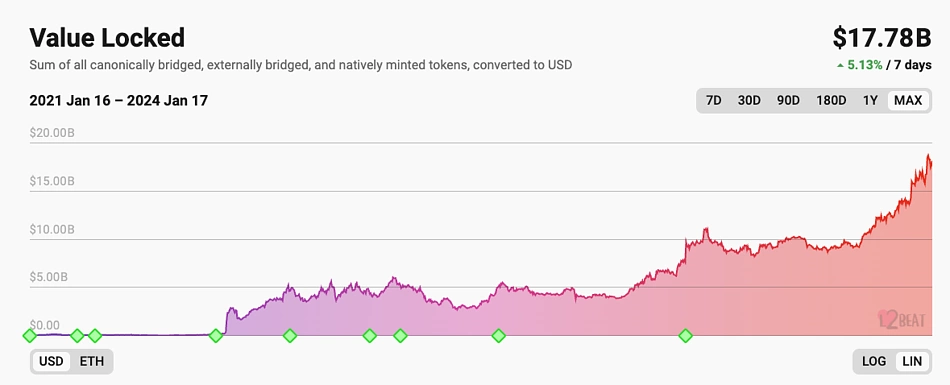
Source: Beat
Below are some L2 optimistic rollups projects to continue watching in 2024 (sorted by TVL):
Arbitrum
Arbitrum is an L2 scaling solution leveraging optimistic rollups to achieve high throughput and lower user transaction costs. Even after The Merge, Ethereum's speed and gas fees are still high compared to other networks, like Arbitrum. This has led many web3 users and creators to shift networks, causing Arbitrum's TVL to hit highs of $3.2B in November 2021.
The recent ARB airdrop has injected much liquidity into the Arbitrum network. Many users who received ARB tokens were incentivized to use them to trade, stake, or provide liquidity on various decentralized exchanges and protocols built on the Arbitrum network. The airdrop has also helped to increase awareness of the Arbitrum network and its potential as an L2 scaling solution for Ethereum.
Optimism
Optimism defines itself as a "fast, stable, and scalable L2 protocol developed by Ethereum developers, for Ethereum developers." It's designed as a minimal extension to the current Ethereum blockchain to scale Ethereum applications seamlessly. Unlike the more common EVM-compatible chains, Optimism is EVM-equivalent, which means that Optimism is in full compliance with the formal specifications of the Ethereum blockchain, where Optimism moves in accordance with Ethereum. Optimism has also released the OP Stack, which modularizes elements of a Layer 2 chain so that developers can build new chains that interoperable with Optimism. In August 2022, Optimism saw its TVL hit a high-time high of $1.15B, according to Defillama.
Base
In February 2023, Coinbase launched Base, an L2 blockchain designed to serve millions of upcoming web3 users using Optimism's OP Stack. The network will provide a secure, cost-effective, developer-friendly solution for creators to build web3 applications. Furthermore, Coinbase has created the Base Ecosystem Fund to support Base startups.
Layer 2s: ZK Rollups
Zero knowledge rollups (ZK rollups) are Layer 2 scaling solutions that improve Layer 1 throughput by taking computation and state storage off-chain. This way, they can process numerous transactions in batches and post summary data on-chain. Zero knowledge rollups allow you to prove knowledge of something without revealing it. This makes them an attractive solution for applications where privacy is paramount, such as digital identity verification and confidential transactions.
Here are examples of ZK rollups to watch out for in 2024:
zkSync Era
zkSync Era is another L2 rollup that leverages zero-knowledge proofs to scale Ethereum without sacrificing security and decentralization aspects. It processes computations and stores most data off-chain. Using zkSync, you enjoy the Ethereum security but at a higher transaction speed and lower cost.
Polygon zkEVM
Polygon has launched its zero-knowledge Ethereum virtual machine (zkEVM) Mainnet Beta on March 27, 2023, which is a big step towards scaling Ethereum and achieving mainstream web3 adoption. Like Optimism, the Polygon zkEVM is EVM-equivalent, which means that most Ethereum-native applications can function on the zkEVM and developers do not need to modify or reimplement code.
Scroll
Scroll is an L2 solution striving to offer unlimited scalability, high throughput, full decentralization, and trust-minimal privacy. It aims to achieve this by leveraging ZK rollup and high-performance off-chain decentralized systems.
Taiko
Taiko is a zero-knowledge Layer 2 is designed to be the most Ethereum-equivalent ZK-rollup, providing dApps a scalable and efficient platform without having to make any changes to their existing protocol. Unlike many other zero-knowledge Layer 2s, Taiko is focused on achieving complete compatibility with Ethereum over the speed of ZK-proof generation, which enables the reuse of execution clients with minimal adjustments. To try out Taiko, you can participate in their protocol usability tests on their testnet.
Bitcoin Layer 2s
Like other Layer 2s mentioned above, Bitcoin Layer 2 projects attempt to scale the Bitcoin blockchain by developing an execution layer that offers higher throughput and more operations than the mainnet. Layer 2s on the Bitcoin network offer execution layers that work differently from the mainnet, supporting operations like virtual machines like the EVM and smart contracts. However, Bitcoin L2 networks face challenges like ensuring secure bridging between Bitcoin and its L2 networks, and ensuring fast speed and low costs when settling proofs on the Bitcoin network.
Layer 2s on the Bitcoin network can include state channels like the Bitcoin Lightning Network, sidechains like Stacks and Rootstock, and even rollups like Merlin.
Bitcoin: Ordinals, BRC-20 Tokens, and Runes
Ordinals are among the latest trends taking Bitcoin by storm. In January 2023, software engineer Casey Rodarmor deployed the Ordinals protocol on the Bitcoin blockchain, enabling NFT minting on the mainnet. The move spiked mixed reactions from the Bitcoin community. Some saw the move as a threat to the Bitcoin blockchain, while others were excited and started crafting Inscriptions – Bitcoin's version of NFTs.
Just like NFTs, Ordinal Inscriptions are digital assets inscribed on a Satoshi, the smallest denomination of a BTC. However, unlike an NFT which utilizes a decentralized file storage system, Ordinals are directly stored on-chain. The inscriptions are made possible by the Taproot upgrade introduced into the Bitcoin blockchain in November 2021.
The number and order of BTC Ordinals have been closely monitored, and there are some noteworthy collections and high-priced sales made so far. They include Ordinal Punks, Taproot Wizards, Bitcoin Rocks, Timechain Collectibles, Ordinal Loops, Ripcashe's Power Source, Bitcoin Shrooms, The Shadow Hats, The Dan Files, and Toruses.
To date, there are almost 55.8 million Ordinal inscriptions on the Bitcoin blockchain.
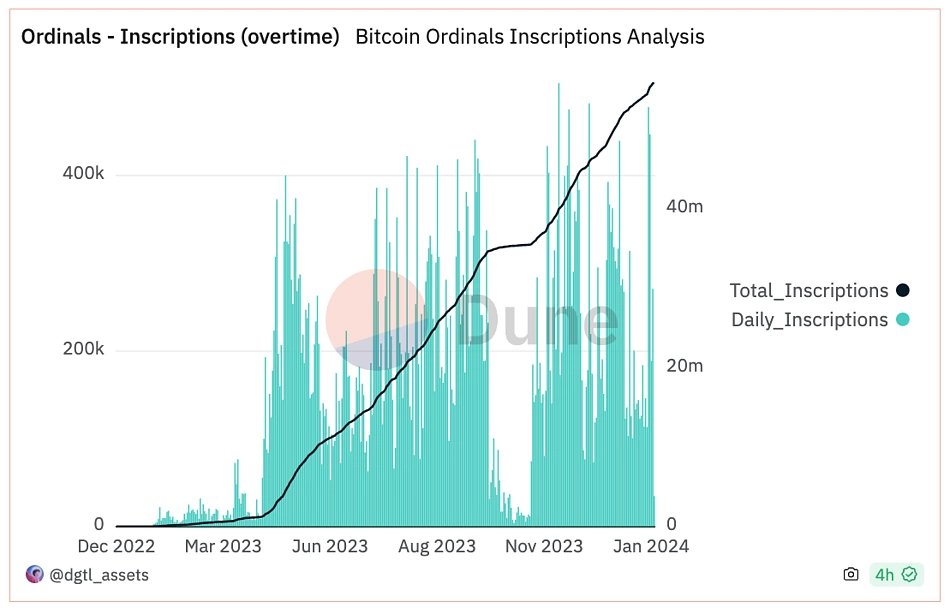
Source: https://dune.com/dgtl_assets/bitcoin-ordinals-analysis
Beyond Ordinals, there has also been an interest in BRC-20 tokens, which uses ordinal inscriptions to enable the minting and transfer of fungible tokens on the Bitcoin blockchain. BRC-20 tokens are similar to the ERC-20 token standard on Ethereum and EVM networks. BRC-20 tokens are minted by the community, where Ordinal wallets can freely mint BRC-20 tokens once they are deployed. While still in the early stages, there are platforms that enable the decentralized minting and trading of BRC-20 tokens.
There has been a surge in interest in BRC-20 tokens in December 2023, leading to a high of over $27 average transaction fee in December 2023.
In 2024, with the fourth Bitcoin halving, Rodarmor is releasing a new fungible token protocol for the Bitcoin ecosystem, which will make it easier and more efficient for users to create tokens on Bitcoin. Runes will likely leverage on the popularity of meme coins, with the Rodarmor himself stating that "Fungible tokens are 99.9% scams and memes." However, by creating a more efficient protocol, there is the expectation that it will bring a significant increase in transaction fee revenue, developer mind share, and users to Bitcoin.
Decentralized Physical Infrastructure Networks (DePIN)
DePIN refers to decentralized physical infrastructure networks, which use blockchains and token rewards to develop infrastructure in the physical world across different fields, such as wireless connectivity, geospatial mapping, mobility, health, energy, and more.
The goal of DePIN is to create resource-efficient physical infrastructure through incentivizing providers to commit their physical resources to a decentralized network. The DePIN then makes these resources available to users who are looking for cheaper service charges (relative to centralized facilities), and the network generates revenue through fees paid by the users.
Check out the top DePIN tokens on CoinGecko.
Decentralized Science (DeSci)
DeSci refers to decentralized science, which uses blockchain technology and its features to make various aspects of scientific research and collaboration more open, incentivized, and community driven. DeSci aims to overcome the ‘valley of death’ in scientific research, where it takes time to develop and translate scientific research into innovations that benefit patients.
Decentralized science is focused on improving the following areas: data sharing, research and publishing, and funding. It does this through incentivizing users with tokens, utilizing NFTs that can be used as a key to the underlying project, and DAOs which can distribute funds and control processes.
Check out the top DeSci tokens on CoinGecko.
GambleFi
GambleFi refers to decentralized applications that provide crypto-based betting services. These applications are bringing online gambling on-chain to improve the user experience, focusing on transparency and fairness. Moreover, in GambleFi, users can now stand on the same side as the house, as they can hold the protocol’s tokens and profit from the protocol’s generated revenue.
The GambleFi narrative took off during the bear market, and it will be interesting to see how it develops when the bull market comes.
Check out the top GambleFi tokens on CoinGecko
Real World Assets
Real World Assets (RWAs) are assets existing in the physical world or off-chain but are tokenized and transferred on-chain to act as a source of yield in DeFi. These include real estate, precious metals, commodities, and art. RWAs are a core element of the global financial system; in 2020, for example, global real estate was valued at $326.5T while the gold market cap stood at $12.39 T. A growing portion of RWAs are focused on the leveraging US Treasury Bills and high interest rates as a way to offer investors lower-risk yields, including companies such as Ondo Finance.
MakerDAO has also entered the RWA space by deploying idle assets into short-term bonds, using the proceeds to ramp up an MKR buyback program and bolster the DAI Savings Rate, providing a clear example of how protocols could benefit from RWA investments. MakerDAO shows how value can flow to token holders, where the buyback program is driving growth of MakerDAO.
The potential impact that RWAs can have on DeFi seems huge:
-
They can provide a source of sustainable and reliable yield to DeFi, as they are backed by traditional assets.
-
They can help DeFi to become more compatible with the traditional financial markets, ensuring more liquidity, capital efficiency, and investment opportunities.
-
They can bridge the gap between DeFi and traditional finance (TradFi).
Maple Finance (MPL), Goldfinch (GFI), and Centrifuge (CFG) are other examples of RWAs that focus on RWA lending that you can have a look at.
Check out the top RWA tokens on CoinGecko
Telegram Trading Bots
In 2023, there was also a rise in Telegram crypto trading bots that offer users convenience and efficiency when it comes to executing trades. Instead of needing a computer to connect your wallet and approve transactions, all users need to do to buy tokes is to copy and paste the token's contract address and send it as a chat to buy the token. This also speeds up the selling process, as you can pre-approve and sign transactions.
Some Telegram trading bots also come with additional features like multi-wallet sniping that bypasses individual wallet restrictions on tokens, and liquidity sniping that executes a buy order once the bot detects liquidity being added to maximize gains on a new token.
Learn more about the different Telegram crypto trading bots and their features in our article on the Top 5 Telegram Trading Bots.
Check out the top Telegram apps tokens on CoinGecko.
Conclusion
In 2023, we saw narratives like Artificial Intelligence, Chinese tokens, and decentralized social media, alongside other narratives like Layer 1s, Layer 2s, liquid staking derivatives, real-world assets, and Bitcoin Ordinals and BRC-20. Moving into 2024, there are new emerging narratives like restaking, DePIN, DeSci, GambleFi, along with an interest in blockchain modularity.
Remember, this article is only for educational purposes and should not be taken as financial advice. Please do your own research (DYOR) before investing in any asset.

Josiah is a tech evangelist passionate about helping the world understand Blockchain, Crypto, NFT, DeFi, Tokenization, Fintech, and Web3 concepts. His hobbies are listening to music and playing football. Follow the author on Twitter @TechWriting001


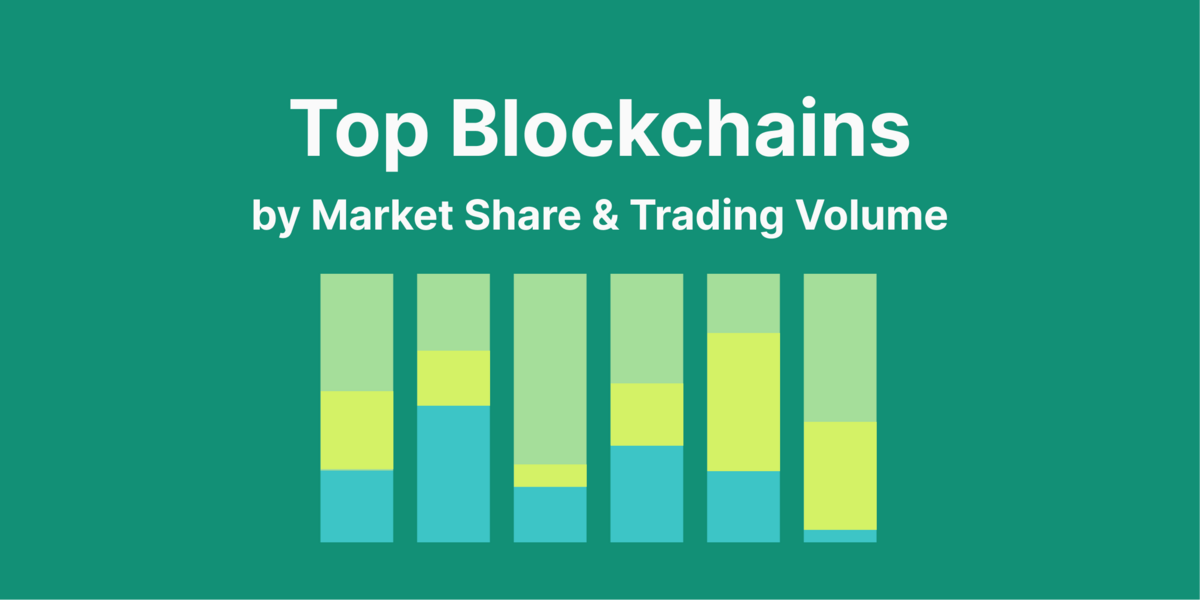
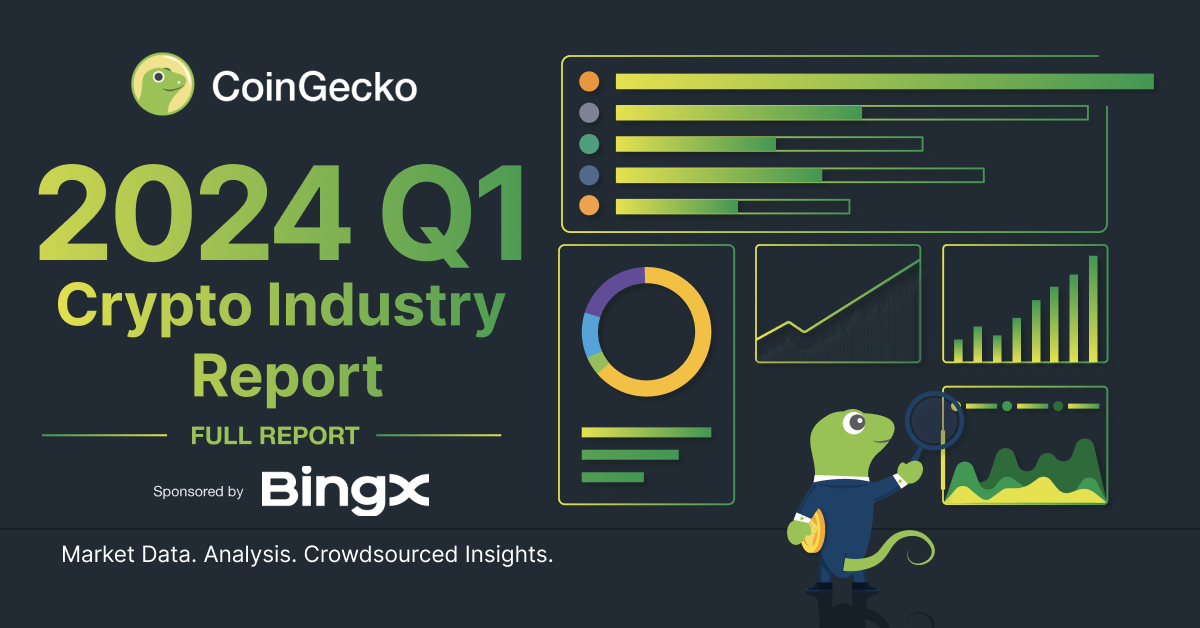
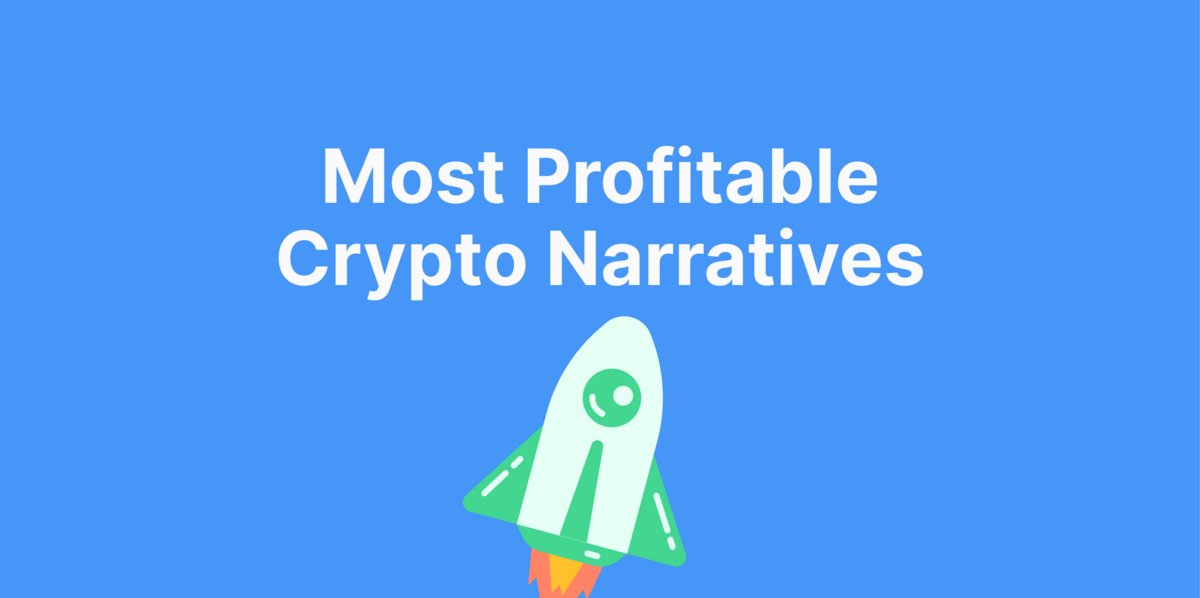
 Or check it out in the app stores
Or check it out in the app stores
